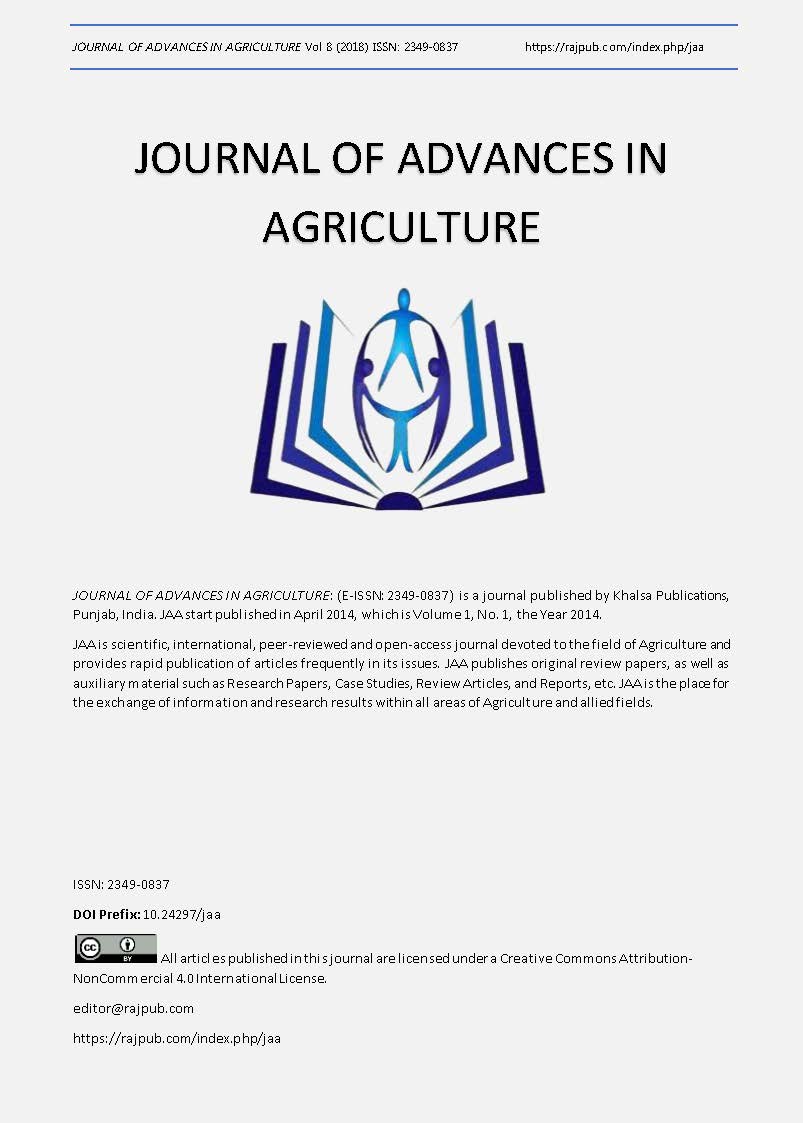Marketing Margins for Imported and Local Rice in Akure, Ondo State, Nigeria
A Comparative Analysis
DOI:
https://doi.org/10.24297/jaa.v8i1.7163Keywords:
Marketing Margins, Imported, local, rice, Comparative, AnalysisAbstract
The study was carried out in Akure, Ondo State. Multi stage and sampling technique procedure was used which involved purposive and random sampling methods in selecting the respondents with the aid of well-structured questionnaire with interview schedule. Descriptive statistical analysis, budgetary techniques, marketing margin analysis as well as Gini-coefficient and Herfindahl Hirshman Index was used for the analysis of variables. The result reviewed that more of the imported brands of rice in all the four market sampled than the local rice, with local rice margin as percentage of total marketing margin (16.95%) lower than that of local rice (17.78%) the average marketing efficiency of 349.91% and 467.89% were obtained from imported and local rice respectively while the Gini- coefficient (GC) Herfindahl Hirshman Index (HHI) values of 0.68 and 0.28 were obtained reviewing that rice marketing were highly concentrated with non-competitive practices showing disparity in earnings. The prevailing duration stocks were held in shops by trader was three to four weeks and the major sources of obtaining market information was mobile phone. The study recommends provision of storage facilities for the traders and also improvement in the quality of local rice with policy implementation that discourage importation of commodity as a way out of boosting and encouraging local rice production and its consumption.
Downloads
References
Akande T. (2002): An overview of the Nigerian Rice Economy, NISER Monograph Series No 11. Nigerian Institute of Social and Economic Research (NISER) Ibadan.
Akinsorotan, A.O (1997): Concept of Labour Pattern among Cocoa Farmers in Ondo State, Journal of Rural Economic Development. 13 (1): 85-95
Akpokodje, G., Lancon, F., and Erenstein, O (2001). Nigeria's Rice Economy. State of the Art Project Report. The Nigerian Rice Economy in a Competitive World: Constraints, Opportunities and Strategic Choices. Bouake, WARDA II-57pp
Cho, DS and HC Moon (2002): From Adam Smith to Micheal Porter; Evolution of Competitiveness theory, World Scientific, Singapore. http://www.sggp.org.un/kinte/2008/3/145977, accessed on August, 2013.
Coy, JEL (2006): Competitiveness and Trade Policy problems in Agriculture Exports: A perspective of Producing/Exporting Countries in the case of Banana Trade to the European Union, Ph.D. Dissertation, University of Gottingen.
Daramola, B (2005): Government Policies and Competitiveness of Nigerian Rice Economy. A paper presented at the workshop on Rice Policy and Food Security in Sub-Saharan Africa Organized by WARDA, Cotonou, Republic of Benin, November 07- 09.
Nkang NM, Abang SO, Akpan OE and KJ Offem (2006): Cointegration and Error Correction Modelling of Agricultural Export Trade in Nigeria: The case of Cocoa. Journal of Agriculture and Social Sciences.
Nigerian Population Census (2006): National Population Commission, Federal Republic of Nigeria. http://www.nigeriamasterweb.com/Nigeria06CensusFigs.html.
Odoemenem IU and JA Inakwu (2011): Economic Analysis of Rice Production in Cross River State, Nigeria.
Journal of Development and Agricultural Economics, 3(9): 469 - 474.United Nations Environment Programme (2005): Integrated Assessment of the Impact of Trade Liberation. A Country Study on the Nigerian Rice Sector. ISBN 92-807-2450-9.
West Africa Rice Development Association (2003): Strategy for Rice Sector Revitalization in Nigeria. Project Report WARDA, Abidjan, Cote d'Ivoire, 14 pp.
West Africa Rice Development Association (2004): The Africa Rice Center- Recognizing WARDA'S Role in Sub-Sahara Africa in: WARDA Annual Report 2002-2003.WARDA-The Africa Rice, Bouake, Cote d'Ivoire, pp 7-12.
Downloads
Published
How to Cite
Issue
Section
License
 All articles published in Journal of Advances in Linguistics are licensed under a Creative Commons Attribution 4.0 International License.
All articles published in Journal of Advances in Linguistics are licensed under a Creative Commons Attribution 4.0 International License.




